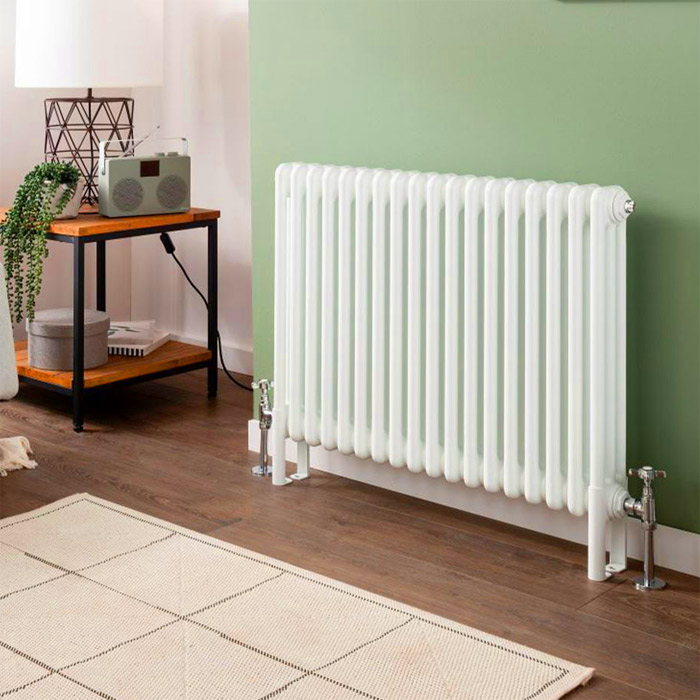
Steam heat is a popular choice for many homeowners due to its reliability and efficiency. However, as with any heating system, achieving optimal comfort and energy efficiency can be a challenge. This is where zoning for steam heat comes into play.
Zoning is a method of managing and customizing your home's heating system to enhance comfort, efficiency, and control. In this comprehensive guide, we will explore what zoning for steam heat is, the benefits it offers, the problems it solves, and how it's implemented, specifically for homeowners.
What is Zoning for Heating Systems?
Zoning refers to the division of a home's heating system into different zones or areas, each of which can be controlled independently. This is achieved through the installation of thermostats and valves in different sections of the house, allowing for separate temperature control in each zone. Traditionally, steam heating systems heat the entire home to a single, uniform temperature. Zoning introduces the ability to customize heating on a room-by-room basis. Learn more about the benefits of zoned heating systems.
Benefits of Zoning for Steam Heating Systems
Enhanced Comfort: One of the primary benefits of zoning is increased comfort. It allows different areas of the home to be heated to different temperatures, catering to the varying preferences and usage patterns of the occupants.
Energy Efficiency: Zoning can lead to significant energy savings. By only heating the areas of the home that are in use, it reduces the overall energy consumption of the heating system.
Cost Savings: With increased energy efficiency comes the benefit of reduced heating costs. Zoning ensures that you're not wasting energy and money heating unoccupied spaces.
Increased System Lifespan: By reducing the overall load on the steam heating system, zoning can help extend the lifespan of the boiler and associated heating components.
Problems Solved by Zoning for Steam Heating Systems
Uneven Heating: One common issue in homes with a single-zone heating system is uneven heating – some rooms are too hot while others are too cold. Zoning addresses this by allowing individual control over different areas.
Overheating and Energy Waste: Without zoning, homeowners often overheat their entire home to warm up a single cold area, leading to energy waste. Zoning eliminates this inefficiency.
Inflexible Heating Options: Traditional steam heating systems offer little flexibility in terms of temperature control. Zoning introduces versatility, catering to diverse needs and lifestyles.
How is Zoning for Steam Heating Systems Different from Zoning for Other Types of Heating Systems?
There are some key differences in how zoning is implemented for steam heating systems compared to other types of home heating systems. With steam heating, zoning typically involves installing thermostatically controlled valves on each radiator or in the steam pipes. These valves regulate the flow of steam to individual radiators, controlling the temperature in different zones. Strategic radiator sizing/placement or special zone valves on steam and condensate return pipes are used to divide the system into zones. The inability to precisely control individual old steam radiators makes zoning them more difficult and limited compared to other heating systems where zone output can be adjusted in real-time. Careful design and equipment upgrades are needed to successfully zone steam heat, and it's imperative that a heating contractor with skill and experience specifically in zoning for steam heating systems is hired to do this work.
How is Zoning for Steam Heating Systems Implemented?
Implementing zoning in a steam heating system involves several steps and considerations:
Assessment and Planning: The first step is to assess the home's layout and heating needs. This involves determining how many zones are needed and which areas of the home will constitute each zone.
Installation of Thermostats: Each zone requires its thermostat. These thermostats will control the heating in their respective areas, allowing for independent temperature settings.
Valve Installation: Alongside thermostats, electronically controlled valves are installed on the steam radiators or in the steam pipes leading to different areas. These valves regulate the flow of steam into each zone based on the settings of the thermostats.
Professional Installation: Due to the complexity of steam heating systems, professional installation is highly recommended. A skilled technician can ensure that the zoning system is set up correctly and efficiently.
System Testing and Calibration: Once installed, the system needs to be tested and calibrated to ensure that each zone is heating as intended and that the overall system is functioning efficiently.
Zoning for steam heat offers homeowners a way to enhance the comfort, efficiency, and control of their heating systems. By allowing for individual temperature control in different areas of the home, it addresses common issues such as uneven heating, energy waste, and inflexibility. While the process of implementing zoning can be complex, the benefits it brings in terms of comfort and cost savings make it a worthwhile consideration for homeowners with steam heating systems.


